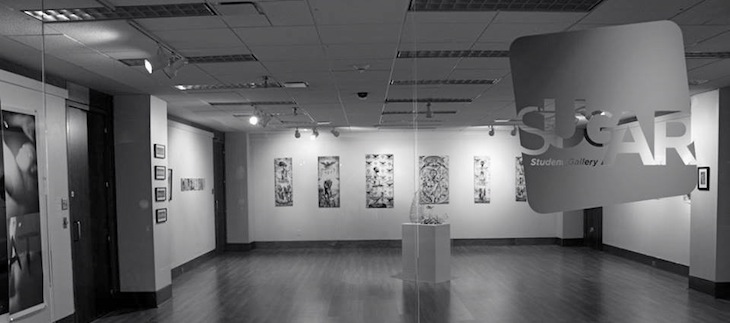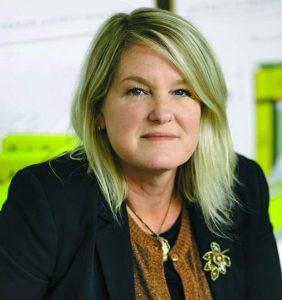Plan to make NWA a destination for culture, arts boosted with UA school of art funding
by September 25, 2017 5:31 pm 809 views

University of Arkansas School of Art head Jeannie Hulen would like to see Northwest Arkansas become a nationally recognized arts hub, and she believes recent support shows the region is ready to elevate the arts to a more prominent role in the community.
The UA announced on Aug. 23 a $120 million gift from the Walton Family Charitable Support Foundation to the Fayetteville-based UA School of Art, known publicly before then as an art department. The investment will go toward significant additions to the school, including the establishment of Ph.D. programs in art history and art education.
“This gift sets a really good example, not just for the state of Arkansas or for our campus but also for the country, in the sense of what needs to be valued and what is valuable, especially within the creative economy,” said Hulen, former art department chair and interim director of the School of Art. She will step into a new role upon the hiring of a director, expected to be announced by Jan. 1.
The establishment of the art school was preceded by significant private investment in arts and culture during the past decade, most notably with the founding of Crystal Bridges Museum of American Art, which opened in 2011 in Bentonville. In the years following, arts organizations, programs and audiences have proliferated throughout the region.
Clayton Lord, vice president of local arts advancement at Americans for the Arts in Washington, D.C., said a high density of arts activity is essential in creating an arts hub.
“In my experience, the most powerful arts hubs — which can run the gamut from places like Branson, Mo., where they’re sustained on a never-ending set of musical acts happening every day, to New York City, to Pittsburgh — have a constant, known hum of creativity and artistic product,” Lord said in an email. “They succeed by placing art at the center of their reputations, whether that is by becoming a mecca for artists, as Paducah, Ky., has, or by becoming known as a place where there is always art to see and do.”
In terms of feeding that cultural ecosystem, the UA School of Art attracts established talent by bringing in new faculty, while it puts out fresh talent to the area’s arts organizations with its graduates.

“You have this cycle of new, young and exciting and innovative thinking,” Hulen said.
The UA is also bolstering the creative economy by now offering an arts-based entrepreneur class, taught by a faculty member with a cross-appointment in the School of Art and the Sam M. Walton College of Business. Lord said basic awareness of business acumen within the creative community is crucial to an arts hub.
“[The creatives] need to be able to, to whatever degree they want to, treat their artmaking as a business.”
He considers that the second step of becoming an arts-centered city.
“The first is creating fertile ground in which creativity can thrive, whether that’s about making sure general citizens have an opportunity to stretch themselves through culture or making sure that actual artists, arts organizations, and creative workers have the basic necessities they need to survive and thrive — housing, work opportunity, financing, space, etc.
“The third step is to ensure that everyone is working through arts, culture and creativity to make the community a better place — and that the members of the community at large, from general citizens to the policymakers in local government, understand and value the role arts and culture is having in that transformation,” Lord said.
WALTON INVESTMENT
This latest boost to the arts and culture ecosystem came the Walton Family Charitable Support foundation, which gives primarily to higher education. It is a separate operation from the Walton Family Foundation. Both entities are based in Bentonville, but while the Walton Foundation’s board is primarily made up of Walton family members, the Charitable Support Foundation, founded in 1987, has just one Walton family member involved.
Arvest Bank CEO Jim Walton serves as chairman, but the rest of the board is comprised of business leaders and investors from throughout the state and two Walton Enterprise employees, according to 2015 tax documents. Former U.S. Sen. Kaneaster Hodges serves as president.
The Walton Foundation has supported advancement of the arts for a number of years and helped found Crystal Bridges. In fact, a major initiative of its Home Region Strategic Plan 2020 is to establish the NWA region “as a leader in arts and cultural amenities,” and the Walton Foundation has invested millions of dollars to that end. In 2015 it commissioned a study to identify gaps in NWA’s cultural infrastructure. The study showed a number of areas for potential growth, including the addition of more mid-sized arts institutions, but it also showed NWA stacked up well overall against peer regions identified as Huntsville, Ala., Lexington, Ky., Chattanooga, Tenn., and Iowa City. Aspirational communities for NWA were identified as Austin, Texas, and Kansas City, Mo.
Lord said the region has potential.
“I was on a panel a couple years ago with a couple Walton Family Foundation folks, and some of the stuff they were talking about happening in Bentonville is fantastic — and I do think that some of it is getting out, at least into the field.
“The work they are doing integrating arts and outdoor activities, including their trails initiative, as well as the quality of the collection at Crystal Bridges, has certainly become something people talk about. I think the challenge continues to be the stigma of historic perceptions of Arkansas as a less developed area of the country with relatively few attractions — which I know is something they’re looking at trying to impact,” Lord said. “An arts hub is a place where the art draws you, but the amenities of the community sustain you.”
